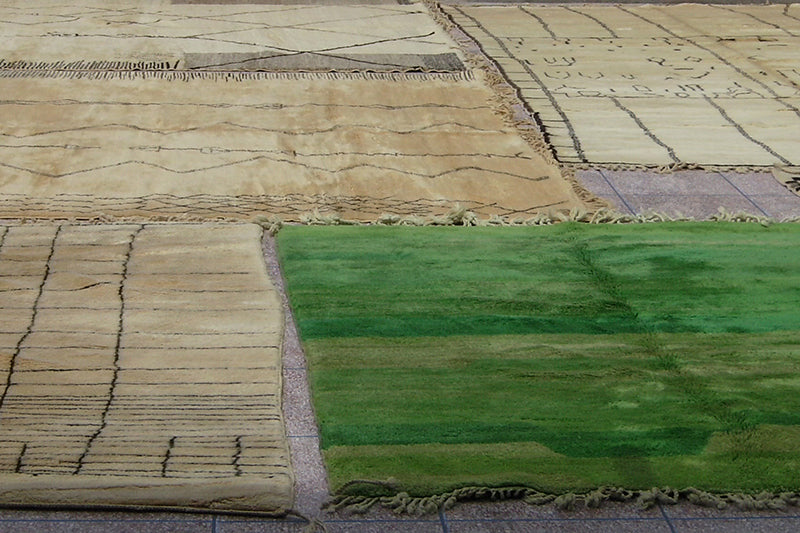Morocco's contrasts and diversity is a result of succeeding civilisations that ruled morocco over thousands of years . It's noticeable in the languages spoken, architecture, clothing, and food, which vary between rural and urban areas and from one tribal region to another. You can recognize this contrast in rugs design too. Morocco tribal textiles are some of the most dazzling and impressive in Africa, if not in the world. The regular variation of design patterns, the vibrant colors, the variety of textures, and the energy they embody make them quite distinct from other textiles from all over the world.
Until mid 20th century, the Berbers experienced isolation almost unmatched anywhere else, sealed off from the rest of the world. Berber rugs were conceived and created in complete seclusion from the outside world, yet they resonate with renowned artists such as Paule Klee, Sean Scutly, Frank Stella, Sol Lewitt, and Barnett Newman.
These rugs were long ignored and undervalued, and city dwellers were indifferent to rural carpets. Prosper Ricard was the first to bring them to light in his four-volume corpus des tapis marocains published from 1923 to 1934, in his efforts to revive the art of indigenous people of North Africa.
Moroccan rugs started gaining popularity in the West when modern designers and architects like Le Corbusier and Frank Lloyd Wright paired those unique weaves with their sleekly designed furniture. That opened the door for Museums and collectors, primarily from Germany, Switzerland, and the united states, to start their journey of expanding significant collections in the '90s.
Berber rugs' colors vary from popping hues to neutral shades, with designs ranging from graphic patterns to an ordered geometric shape.
When abstracted from their ethnographic content, their modernity and their links to contemporary art unfold. Unlike other traditional rugs, Moroccan rugs fit wonderfully well in modern interior decoration. There is nowhere else with this unique tradition of weaving where weavers express this form of art with such creativity, originality, and vitality.
Women have been weaving these creations for thousands of years. These rugs were unique and never reproduced, copied, or imitated until recently, when the fashion world discovered them. Months of work can go into their making.
Today, one can see that the changes in textile production resulting from centuries of modernization have not diminished the coexistence of Berber's vocabulary, aesthetics, symbolism, and charm.
The key to this is the weaver's freedom to express herself unrestrained from using a pattern.

